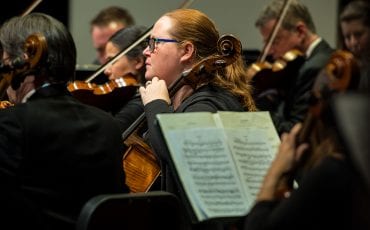What Happens in Language Immersion Programs in Atlanta
 Spanish Academy
Spanish Academy
by Kristy MacKaben
It’s circle time on a Wednesday morning. A dozen 4-year-olds promptly sit on their assigned letter on an Alphabet-themed rug. Legs crossed, hands folded. And they begin to sing their “Good Morning” song. Except it’s actually the “Buenos Dias” song and the teacher and children sing in Spanish.
Then, they recite the days of the week, and the months of the year. They talk about the weather, count to 20 and sing about the seasons. Entirely in Spanish, not one word of English.
Table of Contents
Start Early
These are 4-year-olds in the pre-kindergarten program at the Spanish Academy, a language immersion preschool with locations in Buckhead, East Cobb, Emory and Johns Creek. Though some of the children may speak Spanish at home, for most of the children, English is their first language, and many of the children do not have parents who speak Spanish.
“We’re a total immersion preschool and kindergarten. One hundred percent of the content is taught in the target language,” says DeShea Brooks, director and founder of the Spanish Academy.
The content and information taught at the Spanish Academy is nearly identical to what is taught in other English-speaking preschool and kindergarten classrooms; however, everything is taught in Spanish starting the first day of school.
To a bystander this is nothing short of amazing, but to teachers, parents and students involved with language immersion programs, it is natural; it is a way of life.
“Children at this age are still learning language in general,” Brooks says. “They don’t process it the way an adult would. For them it is very easy and a lot of communication is through hand gestures. All research points to when you acquire a second or third language, you learn more about the native tongue.”
Language Immersion
Once a rarity in the United States, foreign language immersion schools have taken off in popularity. Though immersion schools first popped up in the United States in the 1970s, these types of schools were scarce until about a decade ago when more parents began seeking foreign language immersion education for their children, says Marty Abbott, executive director of the American Council on the Teaching of Foreign Languages.
The organization does not have information or statistics on how many foreign language immersion schools currently operate in the United States. “We only hear anecdotally where programs are being implemented,” Abbott says. “From anecdotal discussions, these schools are spreading very quickly. It is a model that people are looking at across the country. Nationwide, we’re seeing parents as a huge motivator in implementing programs like this.”
In Georgia, the first school focusing on language immersion opened 30 years ago as Atlanta International School, a private school in Buckhead. The school which started with 50 students has grown to about 1,160 students in preschool through 12th grade with a focus on Spanish, French or German, as well as Chinese for upper grades.
“It was a group of local families, some local businesses, some international families and international businesses. They got together and realized something was missing from Atlanta education,” headmaster Kevin Glass says. “What’s special about the international school is you have this multinational world view. You look at things from a lens of other languages and cultures. There was nothing like it at the time in Atlanta.” (The school also offers the International Baccalaureate program.)
Ellen Bender’s daughter Katie began attending the Atlanta International School last year for sixth grade. During the search for a private school for the middle and high school grades, the Benders wanted an educational facility with many opportunities. After visiting the International School they realized that the multicultural experience and global environment was a necessity.
“The number one and number two reason we chose the school was cultural diversity,” Bender says. “Here she has exposure to people from all over the world. It’s just a gift that we feel like is huge.”
Public Schools
Following the International School’s example, other private language immersion schools have opened around Georgia, as well as local public language immersion schools, and public schools that offer advanced language programs, but not complete immersion.
The most recent public school to open is the International Charter School of Atlanta, located in Roswell, though other public district charter schools offer language immersion programs as well.
In August, the International Charter School of Atlanta opened to 390 children in kindergarten through fourth grade focusing on one of four language tracks: Spanish, French, German and Mandarin. Next year, school officials hope to receive more funding to add fifth grade, and consequently add one more grade each year.
“This is a charter school created by a group of parents who wanted to see bilingual immersion options,” says Pamela Spalla, principal at the International Charter School of Atlanta, explaining that students live in many different counties, and anyone living in Georgia is permitted to apply to the lottery system to attend the school. (About 700 children applied last year to fill the almost 400 open spots.)
The thrust behind the recent popularity of language immersion education isn’t just the desire of parents for their children to learn another language, Abbott says. It’s more than that. Children who learn another language at an early age learn to use different parts of their brains, and then, in turn, they succeed in other areas as well. These children who learn second or third languages at young ages outscore their peers (in similar demographic groups) on state and national tests, Abbott says.

Larger View of the World
In addition, many parents want their children to have a multicultural view of the world. “Parents are looking to the future for their own children. Knowing languages is going to be a critical skill in the future. And sometimes parents are aware of the excellent cognitive benefits and academic gains from these programs,” Abbott says. Some parents come from bilingual homes, while others, like the Benders, simply want to give their children a push academically.
“I’m actually wondering why more parents don’t send their children to a language immersion school. It’s good for the development of the child,” says Besa Taiazhi, director at Tabula Rasa, The Language Academy in Sandy Springs. “It’s just good for the brain.” The private school offers Spanish immersion education for babies through children 4 years old, and then bilingual education from kindergarten to fifth grade.
To reap the full benefits of language immersion, children should be exposed to foreign language at an early age. Before age 3 is ideal, but attending a foreign language preschool by age 3 will still allow children to learn foreign languages more easily. “Before about 10 years old, you have a very large window of language, especially at age 2 or 3,” Brooks says.
Teaching “Through Language”
During the early schooling years, most language immersion programs teach every subject in the foreign language. English is not spoken. While adults may think this would be frustrating, experts say children adapt quickly and pick up the language by hand gestures and facial expressions, Brooks says.
“We don’t teach language. We teach through language,” Glass explains. “It’s a medium of instruction. It’s the whole way of thinking.” By the end of kindergarten at language immersion schools, most children are reading and writing in English and the foreign language.
Susan Podray of Cumming can attest to this. Podray’s oldest son Zachary Donovan finished kindergarten at the Spanish Academy last year, and was reading and writing in Spanish. This year he attends the International Charter School of Atlanta. Zachary’s 4-year-old brother Kyle attends the Spanish Academy this year and is also learning to read and write in Spanish.
“Both children are familiar with Spanish and communicate with confidence,” Podray says.
Global Citizens
Around second grade at an international school, more English is spoken and the students are not immersed in the foreign language the entire day, as children need to also focus on English language arts and other subjects, and also other students may be joining the program who have not been exposed to language immersion previously.
And while continuing to speak and learn foreign languages is important for older children, the focus at that time, is more on fostering a multicultural view of society, and encouraging curiosity and exploration, Glass says.
“The whole purpose of the school is to make the world a better place,” Glass says. “Extraordinary individuals are going to be called on to shape the 21st century. The school is growing global citizens and internationally-minded people.”







